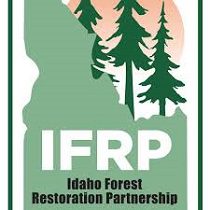Fuels & Fuel Treatments
Training details and registration.
In this streamlined class, you’ll learn how to guide a focused and actionable Community Wildfire Protection Plan process that delivers results. You’ll learn to:
- Map out each stage of CWPP development
- Assess local wildfire risks using trusted tools
- Engage your community and prioritize treatments
- Build and implement a results-driven action plan
Training will be JUNE 9 – 10
8 A.M. – 5 P.M. Redmond Fire and Rescue
341 NW Dogwood Ave. Redmond, Oregon
Webinar registration.
Speaker: Daryn Dockter, LANDFIRE Technical Lead, TSSC, EROS
Webinar recording.
The Southwest Ecological Restoration Institutes (SWERI) established the ReShape program in response to feedback from policymakers, land managers, and researchers. ReShape (reshapewildfire.org) compiles and displays national-scale data on forest treatments and wildfires through the Treatment and Wildfire Interagency Geodatabase (TWIG), a user-friendly, collaborative, and open-access decision support tool. Research efforts focus on four key areas: social science for collaborative decision-making, biophysical effects of forest treatments, data science for large dataset analysis, and economic assessments led by the Conservation Economics Institute. At this critical stage, ReShape is fostering dialogue on TWIG’s effectiveness while refining the tool to better support wildfire risk reduction efforts.
This webinar will provide a tool demonstration, lessons from case studies, and a Q&A session to help researchers, land managers, and graduate students access and incorporate nationwide wildfire and fuel treatment data through the TWIG into their analyses for better understandings of fuel treatment effectiveness across boundaries.
Webinar recording (49:44).
Matt Reeves, (Fuel and Forage), US Forest Service, Rocky Mountain Research Station
Webinar registration.
Hosted by the Montana Forest Collaboration Network
OBJECTIVES:
– Discuss the characteristics of cross-boundary projects and how they increase efficiency and effectiveness when managing priority landscapes
– Inspire more cross-boundary work in Montana
– Build awareness of how collaborative partners can support cross-boundary projects
– Discuss the mechanics of planning and implementing forest management projects across land management boundaries
– Share examples of cross-boundary projects in Montana
Webinar registration.
Learn about new geospatial data products to support wildfire planning and response including national fuel treatments, fire response districts and communities mapping.
Webinar registration.
Behave7 has just been released! We will discuss how Behave v7 differs from BehavePlus v6 by highlighting the Surface, Surface/Crown, Surface/Mortality, and Surface/Contain modules and enhancements that will be included in the next few releases in 2025-2026. This webinar will be useful for both burn bosses and RX-300 cadres.
View article.
Our study aimed to document the expansion of PBAs and provide insight into their structure, function, and impacts. Leaders from 135 known PBAs across the United States were invited to participate in an online survey. Survey results demonstrate a widespread emergence of PBAs in the United States, successfully mobilizing thousands of volunteers to collectively burn more than 34,000 ha annually. PBAs demonstrated that they are reducing myriad barriers to prescribed burning while meeting their goals to broaden access to the use of fire using a neighbors-helping-neighbors model to provide training, pool resources, and reduce the costs of prescribed burning. By including volunteers with diverse levels of experience and backgrounds, PBAs are changing the narrative of who has access to the use of fire.
Webinar recording (43:56)
Join the LANDFIRE Office Hour as Nicole Vaillant (Fire Management Specialist, RMRS, Fire Lab, Wildland Fire Management RD&A) discusses how conducting a Quantitative Wildfire Risk Assessment (QWRA) can enhance land management by evaluating wildfire risk and benefits across a landscape. This information can help plan fuel treatments, suppression responses, and fire effects monitoring. QWRA uses LANDFIRE data to model fire behavior, including fire likelihood, intensity, and impacts efficiently. The Interagency Fuel Treatment Decision Support System (IFTDSS) includes a workflow to make the QWRA process manageable and time efficient.









